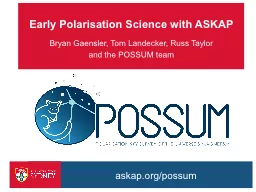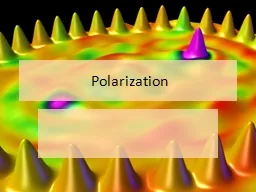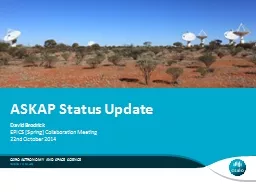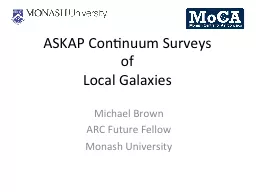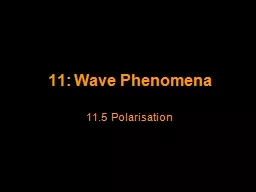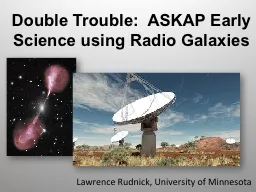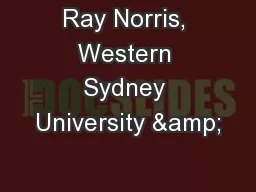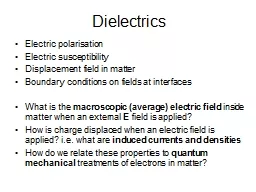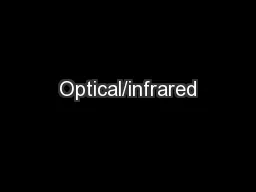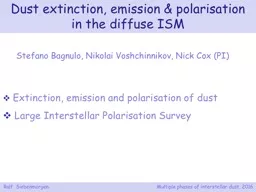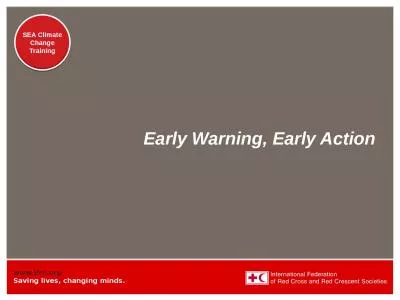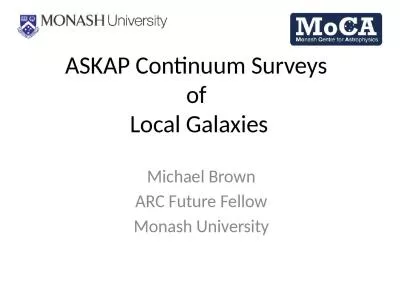PPT-Early Polarisation Science with ASKAP
Author : test | Published Date : 2016-12-01
Bryan Gaensler Tom Landecker Russ Taylor and the POSSUM team askaporg possum New Discovery Space with ASKAP12 Radio polarimetry a highly sensitive probe of density
Presentation Embed Code
Download Presentation
Download Presentation The PPT/PDF document "Early Polarisation Science with ASKAP" is the property of its rightful owner. Permission is granted to download and print the materials on this website for personal, non-commercial use only, and to display it on your personal computer provided you do not modify the materials and that you retain all copyright notices contained in the materials. By downloading content from our website, you accept the terms of this agreement.
Early Polarisation Science with ASKAP: Transcript
Download Rules Of Document
"Early Polarisation Science with ASKAP"The content belongs to its owner. You may download and print it for personal use, without modification, and keep all copyright notices. By downloading, you agree to these terms.
Related Documents

